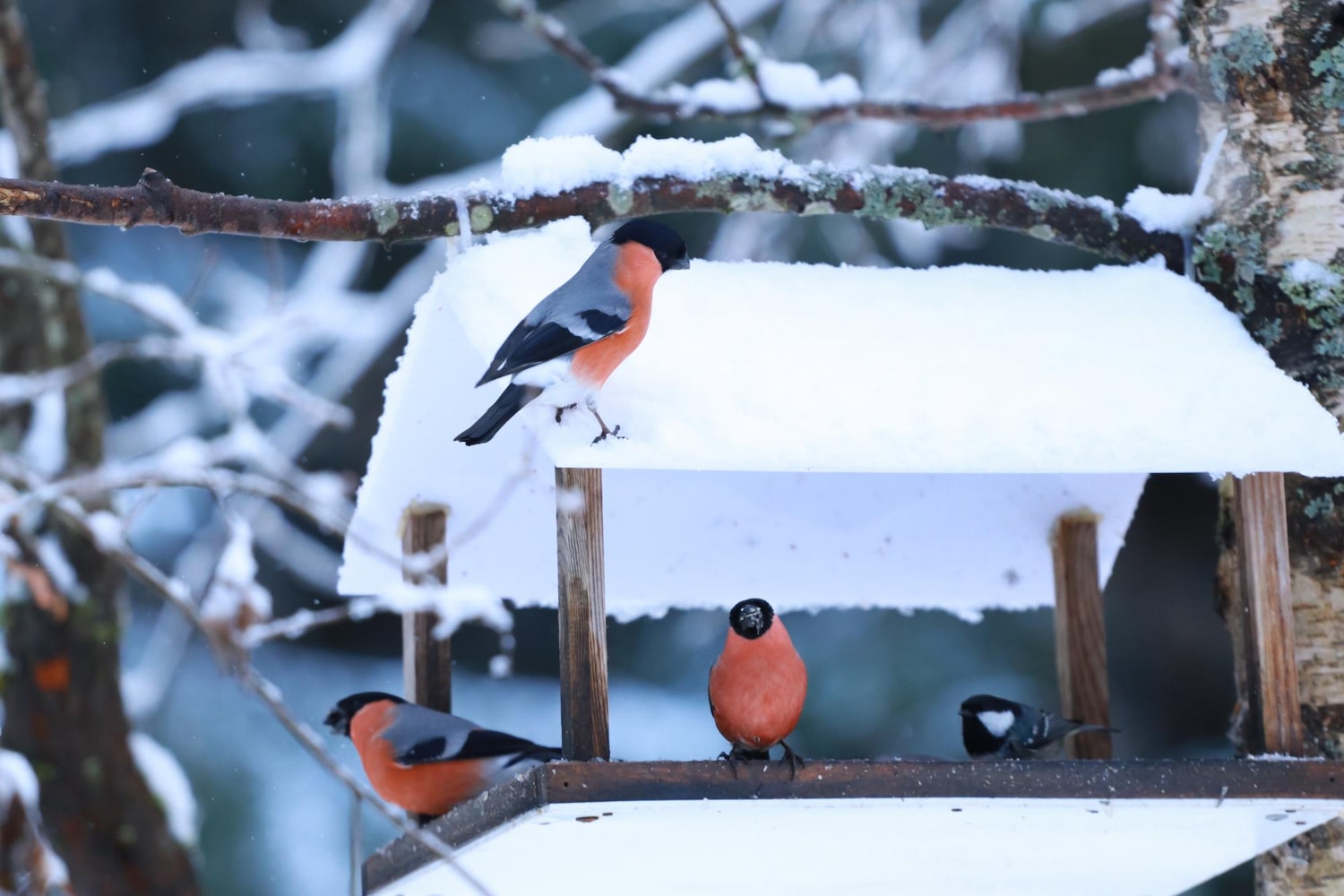Bullfinches are among the most recognizable and beloved birds of winter, often featured on holiday cards and in seasonal scenes. Their vivid red breast feathers stand out beautifully against snowy backgrounds, making them a favorite of birdwatchers and artists alike. Although they are familiar to many people across Europe and Asia, these birds possess a variety of fascinating traits that are not widely known. Bullfinches are not only aesthetically charming but also biologically and ecologically important. Below is a collection of interesting and educational facts about bullfinches that you may not have known.
- Bullfinches belong to the finch family, and their Latin name Pyrrhula pyrrhula means fire-red. This refers to the brilliant red plumage of the males, which makes them easily noticeable even from a distance. Females are colored more modestly in grayish-brown shades. This type of sexual dimorphism is common among many bird species.
- Despite their association with winter, bullfinches are not seasonal birds. They live year-round in temperate and northern parts of Eurasia. In winter, they become more visible as they approach human settlements in search of food. During the warmer months, they stay hidden in forested areas and lead a discreet lifestyle.
- Their diet consists mainly of seeds, buds and berries, especially from birch, alder and spruce trees. They often eat buds before leaves emerge, which can sometimes cause damage to fruit trees. However, in natural ecosystems, this behavior helps regulate plant growth. They also consume seeds from thistles, burdocks, maples and grasses.
- Bullfinches have a short but strong beak that is well adapted for cracking hard seeds. The base of the beak is wide, making it effective for crushing grains. These birds can hold food with one foot while eating, much like parrots. This behavior is rare among wild songbirds.
- During the breeding season, bullfinches become extremely quiet and cautious. It is difficult to find them in forests in May and June because they barely make any sound. They build their nests in coniferous trees, sometimes in deciduous trees, at a height of 1.5 to 3 meters. The female lays 4 to 6 eggs and incubates them for about two weeks.
- Bullfinches are not considered good singers. Their vocalizations consist of soft whistles and gentle chirps, which are not particularly melodic. During courtship, males produce low, subdued tones to attract mates. These sounds are most easily heard on calm winter days.
- In winter, bullfinches may gather in small flocks of up to 20 to 30 birds. These groups can include families as well as unrelated individuals. Flocking helps them find food more efficiently during the scarce winter months. In spring, the flocks disperse as the birds return to solitary nesting.
- Despite their bright colors, bullfinches can camouflage themselves effectively. Their matte plumage blends well with tree bark and shadows, especially on overcast days. Females are particularly well hidden thanks to their subdued chest color, which is important during nesting. This camouflage protects them from predators.
- Bullfinches are highly cold-resistant due to their thick feathers and downy underlayer. They can tolerate temperatures as low as minus 30 degrees Celsius without significant stress. In severe cold, they reduce activity and seek shelter in bushes or under tree canopies. They puff up their feathers and slow their metabolism to retain warmth.
- Bullfinches have become symbols of winter in many cultures. They are frequently depicted on greeting cards, in children’s books and in holiday decorations. In Slavic folklore, they are seen as harbingers of winter and the New Year. They are also associated with peace, comfort and a cozy home.
- Scientists use bullfinches as bioindicators of forest ecosystem health. Changes in their numbers or behavior can signal issues such as food shortages or habitat disturbance. In some regions, bullfinch populations are declining due to deforestation and climate change. For this reason, they are included in biodiversity monitoring programs.
- There are several subspecies of bullfinch that vary in plumage and size. For example, Siberian bullfinches are larger and have more intense red coloring. Other subspecies can be found in Japan, China, the Caucasus and the Himalayas. This demonstrates the species’ wide distribution and adaptability.
These amazing facts about bullfinches show that even the most familiar birds can hold many secrets. Their lives are shaped by seasonal challenges, evolutionary adaptations and ecological importance. Observing bullfinches is not only a visual delight but also a way to better understand nature. Like many other birds, bullfinches deserve our attention and protection of their natural habitats.





